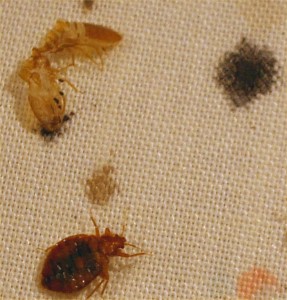Qualified Bed Bug Exterminator Near Me: DC Heat Treatment Specialists
Qualified Bed Bug Exterminator Near Me: DC Heat Treatment Specialists
Blog Article
Discovering the Science Behind Bed Pest Heat Treatments as a Lasting Pest Administration Strategy
In the realm of parasite management, the pursuit for sustainable and efficient options continues to be a continuous search. One such method that has obtained traction in the last few years is the usage of heat therapies to battle bed bug invasions. By harnessing the science behind thermal death factors for these relentless pests, heat therapies supply a promising alternative to conventional chemical-based strategies. The intricacies of how warm successfully removes bed insects and the broader implications for sustainable bug administration techniques make this a subject worth discovering further.
Bed Insect Heat Treatment Process

Thermal Death Factor for Bed Bugs
Revealing bed insects to raised temperatures beyond their thermal tolerance range is essential for achieving effective eradication in warmth therapy procedures. By reaching and maintaining temperatures over the thermal fatality point for bed bugs, pest management specialists can make certain detailed elimination of bed bug populaces, consisting of hard-to-reach areas where chemical treatments might be much less efficient. Understanding the thermal fatality point for bed bugs is essential for applying effective heat therapy methods and accomplishing lasting insect management end results.
Advantages of Heat Treatments
Having established the essential thermal death point for bed insects, it is essential to now discover the substantial advantages that warmth therapies offer in efficiently removing these resistant pests. One of the primary advantages is that heat can permeate deep right into splits and holes where bed insects hide, making sure that also the most hard-to-reach locations are warmed to lethal temperature levels.
Furthermore, heat treatments are ecologically friendly and non-toxic, making them a sustainable insect administration method. Unlike chemical pesticides, warmth therapies do not leave unsafe deposits that can posture threats to human wellness or the setting. This facet is specifically crucial in delicate atmospheres such as healthcare facilities, institutions, and suburbs check that where chemical use may not be preferable.
In addition, warmth therapies have a high success rate in eliminating bed bug infestations in a solitary therapy, minimizing the need for several check outs and lessening disruption to occupants. This efficiency not just saves time and money but additionally supplies assurance to those dealing with bed pest issues.
Efficiency of Heat Therapy

Research researches have constantly demonstrated the efficiency of heat treatments in attaining a high rate of bed pest mortality. Effectively conducted warm therapies can reach all the gaps and fractures where bed insects might be nurturing, guaranteeing a thorough method to elimination. Furthermore, warm therapies have the added benefit of eliminating bed bug eggs, which are typically immune to traditional chemical treatments. In general, the performance of warmth treatments in eliminating bed insect invasions makes them a reliable and sustainable pest management technique.
Lasting Pest Management Benefits
Implementing lasting parasite monitoring methods provides long-term advantages for both the atmosphere and public health and wellness. By utilizing methods such as warmth therapies for insect control, we can lower the dependence on damaging chemical pesticides that can have adverse results on ecological communities and human health and wellness - exterminator near me. Lasting bug administration strategies aid in maintaining biodiversity by targeting specific bugs without harming non-target microorganisms, thereby maintaining a well balanced ecosystem
Additionally, sustainable bug monitoring methods add to the general health and health of the general public. By minimizing exposure to hazardous chemicals used in traditional this contact form parasite control methods, heat therapies supply a safer choice for pest administration in residential, business, and public areas. This decrease in chemical use also assists in protecting against pesticide residues from polluting water, soil, and air, securing ecological top quality.
Verdict
To conclude, bed bug warmth therapies have actually been revealed to be a reliable and lasting bug management strategy. The thermal death point for bed bugs makes them prone to warmth therapies, which have countless benefits over traditional chemical therapies. The performance of warm treatments in getting rid of bed insect problems while minimizing ecological impact highlights the possibility of this approach as a lasting solution for insect control.
The bed insect warmth treatment process involves increasing the temperature within plagued locations to a level that efficiently removes bed bugs and their eggs. By reaching and maintaining temperatures above the thermal fatality factor for bed pests, pest monitoring professionals can guarantee extensive removal of bed insect populaces, including hard-to-reach locations where chemical treatments may be much less reliable. One of the key benefits is that heat can pass through deep right into splits and gaps where bed bugs conceal, guaranteeing that also the most hard-to-reach areas are warmed to deadly temperatures. Unlike chemical therapies that might leave behind resistant populations, heat treatments provide a environmentally friendly and non-toxic option that can pass through deep right into furnishings, walls, and other hard-to-reach areas where bed insects hide.
The thermal death factor for bed pests makes them at risk to warmth treatments, which have many advantages over conventional chemical therapies.
Report this page